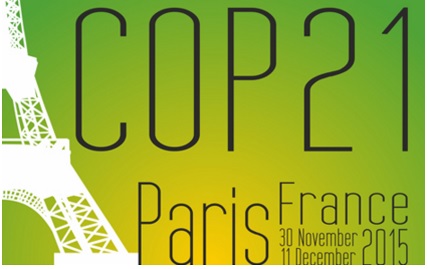Mechanisms to boost large-scale capital for climate action in cities set out in study by Alliance initiated by UN Secretary-General
Paris, Dec 4 2015. – Proven innovative policies and mechanisms are unlocking investment for much-needed climate-smart infrastructure in cities, according to a new report, and need to be scaled up globally. The State of City Climate Finance report is being launched today by UN Secretary-General Ban Ki-moon and international partners at the Climate Summit for Local Leaders at Paris City Hall, taking place on the margins of the UN Climate Conference in Paris.
The report is the first issued by the Cities Climate Finance Leadership Alliance (CCFLA), a coalition of over 40 banks, national governments and civil society organizations launched by the UN Secretary-General at the Climate Summit he convened in September 2014. The aim of the Alliance is to accelerate investment in low-emission, climate resilient infrastructure in cities, and to close the investment gap in urban areas over the next fifteen years. Alliance members are working on a plan to help translate the report recommendations into action.
Five transformative recommendations
The State of City Climate Finance report recommends five innovative routes for mobilizing investment in low-emission, climate-resilient urban infrastructure:
1. Urge national governments to adopt policies and incentives that encourage cities to invest in low-emission and climate-resilient infrastructure.
• In Brazil, a fiscal transfer mechanism known as ICMS-Ecológico allows participating states to transfer part of their sales tax revenues to cities based on the creation of protected conservation areas. In Paraná state, some US$200 million was redistributed under the scheme from 1992- 2001, and protected areas grew by more than 165 per cent.
• Rwanda’s Environment and Climate Change Fund (FONERWA), which finances projects that promote climate resilience and green growth, targets 10 per cent of its funding to go to districts and cities. The government has committed $4.2 million, and mobilized $80 million from external sources.
2. Support cities in adopting frameworks that put a price on climate externalities, such as cap-and-trade mechanisms.
• Washington, DC launched a credit-trading facility in 2014 by which participants receive stormwater retention credits for exceeding regulatory requirements or making voluntary investments in green roofs, rain gardens or other infrastructure projects that reduce stormwater runoff, making the city more resilient to climate change.
• As of September 2015, 23 cities, states, and provinces have employed carbon-pricing instruments, mostly in the form of carbon taxes or emissions-trading systems, depending on local contexts. By the fourth year of Tokyo’s successful cap-and-trade programme, emissions have been reduced by 23 per cent.
3. Strengthen facilities that can support cities in developing investment-worthy climate action projects.
• The Cities Development Initiative for Asia (CDIA), led by the Asian Development Bank with a number of donors, has completed pre-feasibility studies for 85 infrastructure investment projects for medium-sized cities
in developing Asia, of which 49 projects have attracted $5.9 billion in financing.
4. Direct international development finance through local financial institutions, which are well positioned to help cities finance climate-smart infrastructure solutions.
• Mexico’s EcoCasa programme has channeled more than $50 million in sub-commercial loans from the Clean Technology Fund, Inter-American Development Bank and Germany’s KfW Development Bank through a federal mortgage society, which in turn, has issued concessionary loans to local housing developers to use energy efficient and renewable technologies. Its local presence makes it well suited to identifying eligible local builders, offering credit and mortgages to local borrowers and managing risks. Since 2013, EcoCasa is already half way to its goal of financing 27,600 sustainable homes by 2019, which would prevent a total of 1 million tonnes of C02 emissions.
5. Create a network of labs to innovate new financial instruments and funding models.
• A number of effective labs exist for this purpose, including Climate-KIC’s new Low Carbon City Lab. The Global Innovation Lab for Climate Finance, established by a group of climate-finance donor countries, has piloted several initiatives that have attracted more than $170 million in funding. Expanded or additional labs are needed to scale up funding. Labs could also serve to establish standards and lend credibility to help the green bond market grow, as the Climate Bonds Initiative, World Bank and others have been doing.
Climate action in cities crucial, finance needed
Climate action in cities is crucial to addressing the global climate threat. Urban areas account for over 70% of energy-related CO2 emissions, and the world’s cities produce almost half (37-49%) of all global greenhouse gas emissions, according to the Intergovernmental Panel on Climate Change. Cities are also on the front lines of climate impacts and urgently need to build resilience. More than 80% of the overall annual global costs of adaption to climate change are estimated to be borne by urban areas, according to the World Bank.
Roughly $4.1-4.3 trillion will already need to be spent on urban infrastructure annually over the next 15 years, just to keep up with projected growth in a business-as-usual scenario, according to analysis done for this report. It will only cost an estimated $0.4-$1.1 trillion more in upfront investment to make this urban infrastructure low-emission and climate-resilient, which will pay dividends in decreased air pollution and increased efficiency and quality of life. The scale of urban investment needed is a critical opportunity to create better growth for cities.
The report analyzes the obstacles that many cities face in obtaining the financing they need, including uncertainty over regulatory and tax policies, lack of expertise in project development, lack of control over infrastructure planning, high transaction costs and lack of proven funding models at the city and regional level. Cities in developing countries in particular have difficulty obtaining commercial financing: of the 500 largest cities in emerging economies, only 4 per cent are deemed creditworthy in international markets, according to the World Bank.
The McKinsey Center for Business and Environment provided research and analysis to inform the report. Financial support for the report was provided by the Children’s Investment Fund Foundation (CIFF) and Agence Française de Développement (AFD).
